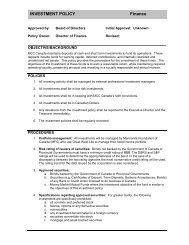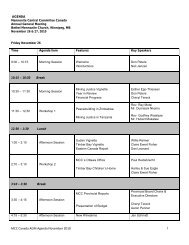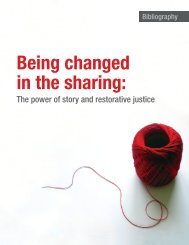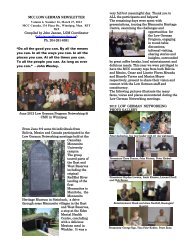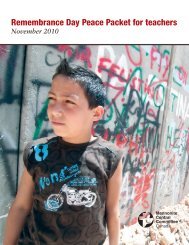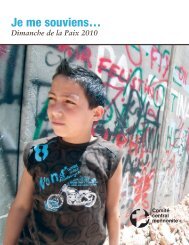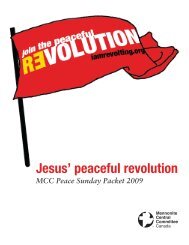Walking together: Healing and hope for Colombian refugees
Walking together: Healing and hope for Colombian refugees
Walking together: Healing and hope for Colombian refugees
You also want an ePaper? Increase the reach of your titles
YUMPU automatically turns print PDFs into web optimized ePapers that Google loves.
History <strong>and</strong> Context of Forced<br />
Displacement in Colombia<br />
<strong>Colombian</strong>s come to Canada <strong>for</strong> a variety of reasons - some come <strong>for</strong> economic reasons, as workers<br />
or professionals, others come as members of Canadian families, <strong>and</strong> others come seeking safety, as<br />
<strong>refugees</strong>. <strong>Colombian</strong>s that flee Colombia as <strong>refugees</strong> do so because they can no longer live safely in their<br />
country. For a <strong>Colombian</strong> to receive refuge in Canada through the Canadian Government’s Humanitarian<br />
Protection Program, he or she must prove that they were living under serious threat of death <strong>and</strong> could<br />
no longer live in any part of Colombia.<br />
The journey to Canada <strong>for</strong> most <strong>Colombian</strong> <strong>refugees</strong> begins with <strong>for</strong>ced displacement from their original<br />
homes, farms, towns or cities. Forced displacement usually involves loss of l<strong>and</strong>, home, jobs, belongings,<br />
educational pursuits, dreams, friends, community, social ties, <strong>and</strong> all sense of security. In order to better<br />
underst<strong>and</strong> the variety of factors that cause <strong>for</strong>ced displacement in Colombia, it is helpful to underst<strong>and</strong><br />
the history <strong>and</strong> context of the armed conflict in Colombia.<br />
HISTORY<br />
In the 200 years since Colombia became a Republic, the population has only enjoyed five years of<br />
relative peace. 1 It is a society of victims <strong>and</strong> perpetrators, with a blurred distinction between one <strong>and</strong> the<br />
other. The diverse <strong>for</strong>ms of violence affect <strong>Colombian</strong> people as individuals, but also as a whole society;<br />
millions of people are affected simultaneously by the same realities. In a society that suffers collective<br />
traumatization, where everyone seems to carry too much fear <strong>and</strong> pain to live truly healthy lives, healing<br />
will also need to unfold collectively.<br />
Although the root causes of the <strong>Colombian</strong> conflict lie in the structures of exploitation <strong>and</strong> exclusion<br />
generated after the Spanish invasion in the early 1500s, the current internal armed conflict started with<br />
the unsatisfactory resolution of the civil war, called “La Violencia,” between Conservatives <strong>and</strong> Liberals<br />
that tore the country apart between 1948 <strong>and</strong> the late 1950s. Insurgent or guerrilla groups <strong>for</strong>med<br />
during the mid 1960s in response to the economic exclusion <strong>and</strong> political intolerance perpetrated<br />
by the peace agreements signed by the Conservative <strong>and</strong> Liberal elites in 1957. Two main insurgent<br />
groups, FARC (Revolutionary Armed Forces of Colombia) <strong>and</strong> the ELN (National Liberation Army) gained<br />
1. The History section has been adapted by Bonnie Klassen from her previous publication, Klassen, B., (2006) Opening Space <strong>for</strong><br />
<strong>Healing</strong> in Colombia, in Peacebuilding in Traumatized Societies, <strong>and</strong> the MCC Colombia Field Guide.



